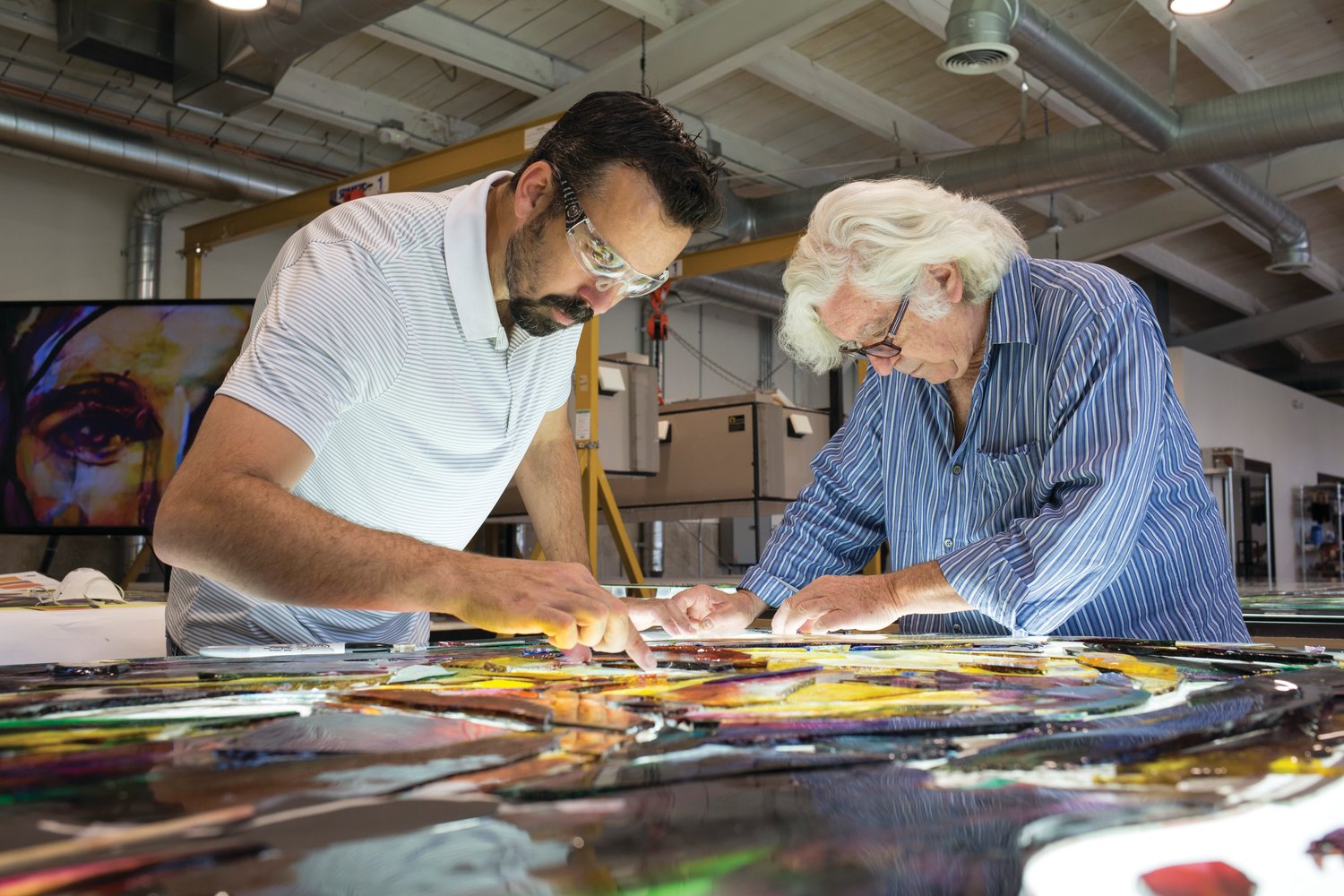Ah, the magic of Photoshop.
Create an enormous stained glass window, with the touch of an oil painter, like Tim Carey did.
Pitch it to a megachurch in Kansas.
Win the …
This item is available in full to subscribers.
We have recently launched a new and improved website. To continue reading, you will need to either log into your subscriber account, or purchase a new subscription.
If you had an active account on our previous website, then you have an account here. Simply reset your password to regain access to your account.
If you did not have an account on our previous website, but are a current print subscriber, click here to set up your website account.
Otherwise, click here to view your options for subscribing.
* Having trouble? Call our circulation department at 360-385-2900, or email our support.
Please log in to continue |
|

Ah, the magic of Photoshop.
Create an enormous stained
glass window, with the touch of an oil painter, like Tim Carey did.
Pitch it to a megachurch in Kansas.
Win the bid.
Soak in the accolades.
Then freak the h-e-double hockey sticks out.
Because stained glass doesn’t really “do” Photoshop. Its roots are slightly more archaic, hailing to the 7th century when exciting things like paper money, compasses, and gunpowder were hot new technologies.
Stained glass also doesn’t naturally blend, like the oil paints Carey was used to. So how to pull off the design he’d sold without a clue as to how to execute it?
“Holy Frit.”
That’s what crossed director Justin Monroe’s mind one night after working on the film for nearly six and half years. He ran it by his wife, who loved it, and then by Carey, the mastermind behind the masterpiece. (For folks new to the glass scene, “frit” is essentially ground glass with a specific chemical composition that reacts to heat or other chemicals.)
The tongue-in-cheek title is a perfect indication of “the clash of the reverent and irreverent throughout” the documentary, Monroe said.
“I’m not a documentary guy; I’m a narrative guy,” Monroe told himself, but he was hooked on the story from the get-go.
The United Methodist Church of the Resurrection in Leawood, Kansas, was hunting for just the right piece of art for its new sanctuary building. Monroe helped shoot a window-design promo for Judson Studios and Carey’s submission to the largest mainline church in North America, and they won the bid.
He started filming “Holy Frit” Nov. 7, 2014. The inauguration ceremony and install was scheduled for Easter 2017.
Packed into those three years is the heart and soul of the film.
“I knew nothing about stained glass,” he admitted before he moved to Southern Pasadena.
Carey was his next-door neighbor.
And Judson Studios, the family-owned glass studio where the magic and madness would happen, was located down the street, at Highland Park.
“Our relationship developed with sticking a camera in his face,” Monroe said. “The project came to my porch.”
“Tim is a jackass,” he said lovingly. “He wears emotions on his sleeve; his mouth gets him in trouble.”
Of the process, Monroe said, “I was sacred shitless. Tim was scared shitless. The church was scared shitless. Narcissus was scared shitless.”
Narcissus?
OK, so every beginner needs a master to show them the ropes. Enter Narcissus Quagliata, one of most important contemporary glass workers in the world. He’s the mastermind behind “The Dome of Light: Wind, Fire, and Time,” the world’s largest illuminated glass dome, located in Southern Taiwan. He brought the idea of using fused glass to the resurrection triptych.
Then it was up to the camera to see what would happen.
Monroe used the term “embedded” to explain his rapport with the subjects.
“I wanted to be there long enough to disappear,” he said. “I let people be who they are.”
He’d shoot until he’d run out money, fundraise, shoot, repeat. He did that until he amassed more than 1,100 hours of footage, eventually editing down to a 2-hour film.
“Holy Frit” was a traditional three-act structure, which Monroe referred to as, “Can it be done? Will it be done? Will it be Tim?”
“I absolutely fell in love with doing documentaries,” he added.
“Taking on a project bigger than you is life-changing,” he said. “Watching transformation in real time,” he added, was dynamic.
“My own life was mirroring the project.”
During a recent conversation, he emphasized, “I wanted to make a universal film, not about glass, [but] about characters. I did.”
The public agrees, as the documentary has been scooping up acclaim, winning Best Documentary Feature at deadCenter Film Festival, and three audience awards for best documentary feature, from Florida Film Fest, the Annapolis Film Festival, and Dances with Films thus far.
“I’m nothing but grateful, all the time,” he said. “It’s so much more than I ever thought it could be.”